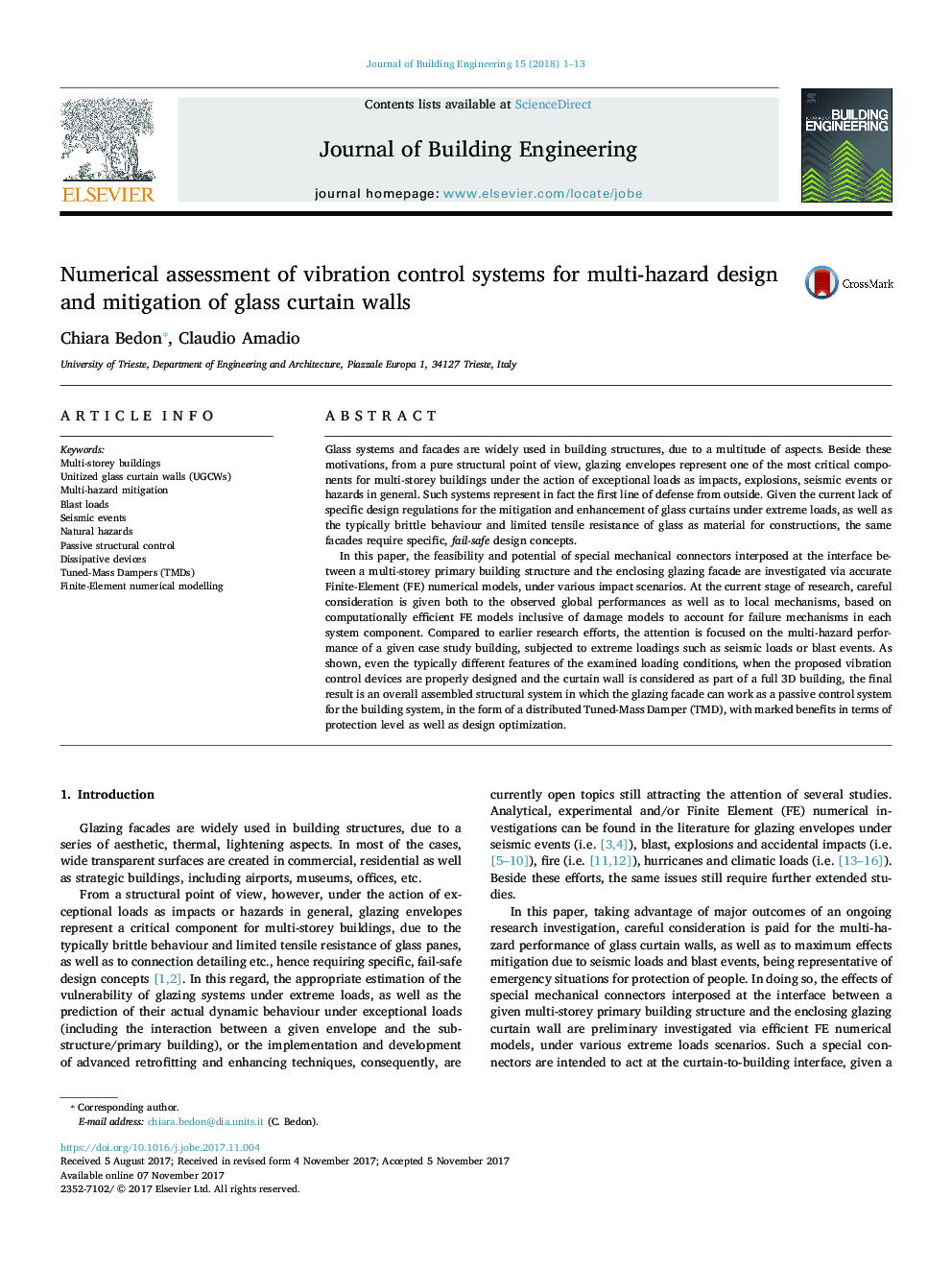| Article ID | Journal | Published Year | Pages | File Type |
|---|---|---|---|---|
| 6750014 | Journal of Building Engineering | 2018 | 13 Pages |
Abstract
In this paper, the feasibility and potential of special mechanical connectors interposed at the interface between a multi-storey primary building structure and the enclosing glazing facade are investigated via accurate Finite-Element (FE) numerical models, under various impact scenarios. At the current stage of research, careful consideration is given both to the observed global performances as well as to local mechanisms, based on computationally efficient FE models inclusive of damage models to account for failure mechanisms in each system component. Compared to earlier research efforts, the attention is focused on the multi-hazard performance of a given case study building, subjected to extreme loadings such as seismic loads or blast events. As shown, even the typically different features of the examined loading conditions, when the proposed vibration control devices are properly designed and the curtain wall is considered as part of a full 3D building, the final result is an overall assembled structural system in which the glazing facade can work as a passive control system for the building system, in the form of a distributed Tuned-Mass Damper (TMD), with marked benefits in terms of protection level as well as design optimization.
Keywords
Related Topics
Physical Sciences and Engineering
Engineering
Civil and Structural Engineering
Authors
Chiara Bedon, Claudio Amadio,
